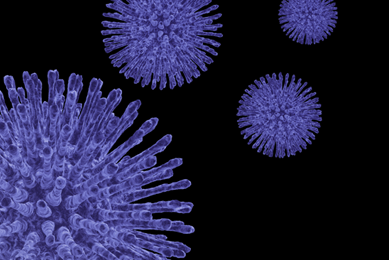Why it's important
In the production of biological products, NGS has proven to be a powerful tool for identifying known and unknown adventitious viruses (adventitious viruses are viruses present by chance or those that have been unintentionally introduced during product preparation). NGS offers several advantages, including cost and time savings, no in vitro requirements, and platform agnosticism. For example, there have been a prevalent number of cases where cell lines and vaccines have shown the presence of viruses that were not detected by conventional methods, but were detected by NGS.2,3
Because the presence of viral contaminants can interfere with bioproduct characteristics and pose a serious health risk for materials that will be used on patients, it is essential that they are identified before the product goes to market. Therefore, when adopting NGS technology for use in the detection of adventitious viruses, rigorous validation studies are essential to demonstrate the reliability, sensitivity, and specificity of the method. The use of high-quality viral reference materials is crucial for these validation studies as they can be used to ensure the assay is able to identify rare or unexpected viruses, can detect viral sequences at low concentrations, and can be consistently used across different laboratories.
What’s the solution?
Under contract to the U.S. FDA, ATCC produced a set of five high-titer viruses and a set of seven purified, high-titer viruses to be used as standards in high-throughput sequencing technologies. These viruses represent a variety of virus families with diverse physicochemical and genomic properties. The five high-titer viruses recognized as WHO International Reference Reagents are now available as a panel through BEI Resources (NR-59622) “Center for Biologics Evaluation and Research Virus Next Generation Sequencing Reference Reagents,” and the second set of seven purified, high-titer viruses will be designated “WHO International Reference Panel for Adventitious Virus Detection by HTS” later in 2024 as BEI catalog number NR-59630.
The table below summarizes the characteristics of the viral reference reagents.
| 5 Virus panel | 7 Virus panel | Family | Description | Genomic characteristics | Genome size | Structure properties |
| ✓ | ✓ | Circoviridae | Porcine circovirus type 1 (ATCC CCL-33) | DNA, single-stranded; circular | 1.8 kb | Non-enveloped capsid, non-segmented |
| ✓ | ✓ | Reoviridae | Mammalian orthoreovirus type 1 (ATCC VR-230) | RNA, double-stranded; linear | 23.6 kb (in ten 1.2 to 3.9 kb segments) | Non-enveloped capsid, segmented |
| ✓ | ✓ | Herpesviridae | Epstein-Barr virus (HHV-4) strain B95-8 (ATCC VR-1492) | DNA, double-stranded; linear | 172 kb | Enveloped capsid, non-segmented |
| ✓ | ✓ | Retroviridae | Feline leukemia virus strain KT-FeLV-UCD-1 (ATCC CRL-8012) | RNA; single-stranded; linear (dimeric) | 8.5 kb | Retrovirus, enveloped capsid, non-segmented |
| ✓ | Coronaviridae | Human coronavirus OC43 (Beta coronavirus 1) (ATCC VR-1558) | RNA; single-positive stranded; linear | 26-33kb | Enveloped helically symmetrical nucleocapsids, non-segmented | |
| ✓ | ✓ | Paramyxoviridae, Pneumovirus | Human respiratory syncytial virus strain A2 (ATCC VR-1540) | Negative-sense, single-stranded RNA | ~ 15 kb | Enveloped capsid, genome encodes 11 viral proteins |
| ✓ | Parvoviridae, Parvovirus | Minute virus of mice strain prototype (p) (ATCC VR-1346) | Negative-sense, single-stranded DNA virus | ~ 5 kb | Non-enveloped capsid, group A (capable of autonomous replication) |
How we can help
These reference materials are available to qualified investigators and institutions worldwide through the BEI Resources website. Prospective customers, registrants, and depositors can access the complete set of registration, deposit, and order forms HERE.
BEI Resources is funded under contract 75N93024C00001 by the National Institute of Allergy and Infectious Diseases, National Institutes of Health, Department of Health and Human Services. The views expressed herein neither imply review nor endorsement by HHS nor by the U.S. Government.
Did you know?
Currently recommended assays for adventitious virus recognition can “miss” the detection of novel and even some known viruses.
Finding porcine circovirus type 1 (PCV1) in a licensed rotavirus vaccine (Victoria et al., 2010)
Discovery of a novel rhabdovirus in the Sf9 insect cell line used for baculovirus-expressed products (Ma et al., 2014)
In both cases, extensive testing was done using currently recommended assays to demonstrate the absence of adventitious viruses.
Meet the author
Heather Couch, PhD, PMP
Director, Government Programs, ATCC Federal Solutions (AFS)
Heather serves as the Director of Government Programs at ATCC, where she leads a multifaceted portfolio of contracts in support of federal partners including the CDC and FDA. Her work centers on ensuring access to essential reagents and diagnostics critical to disease surveillance and pandemic preparedness. Leveraging her deep expertise in science, technology, and program management, Heather fosters innovation and strategic collaboration to advance public health outcomes.
Explore our featured resources

Bioproduction
Explore our credible resources for industrial bioprocessing and cell-based applications.
More
Virology
The ATCC virology collection provides researchers with the critical biomaterials and derivatives needed for basic research and the development of novel diagnostics, antivirals, and vaccines. (190)
More
Federal Solutions
Support for federal agencies through contracts focused on global health and infectious diseases, biodefense, chronic diseases, clinical study support, global logistics, and biorepository establishment/maintenance.
MoreReferences
- WHO Expert Committee on Biological Standardization. 72nd and 73rd report: WHO TRS N°1030: 2020. May 11, 2021. Accessed online <https://www.who.int/publications/i/item/9789240024373>
- Victoria JG, et al. Viral nucleic acids in live-attenuated vaccines: detection of minority variants and an adventitious virus. J Virol 84(12): 6033–6040, 2010. PubMed: 20375174
- Ma H, et al. Identification of a novel rhabdovirus in Spodoptera frugiperda cell lines. J Virol 88(12): 6576–6585, 2014. PubMed: 24672045